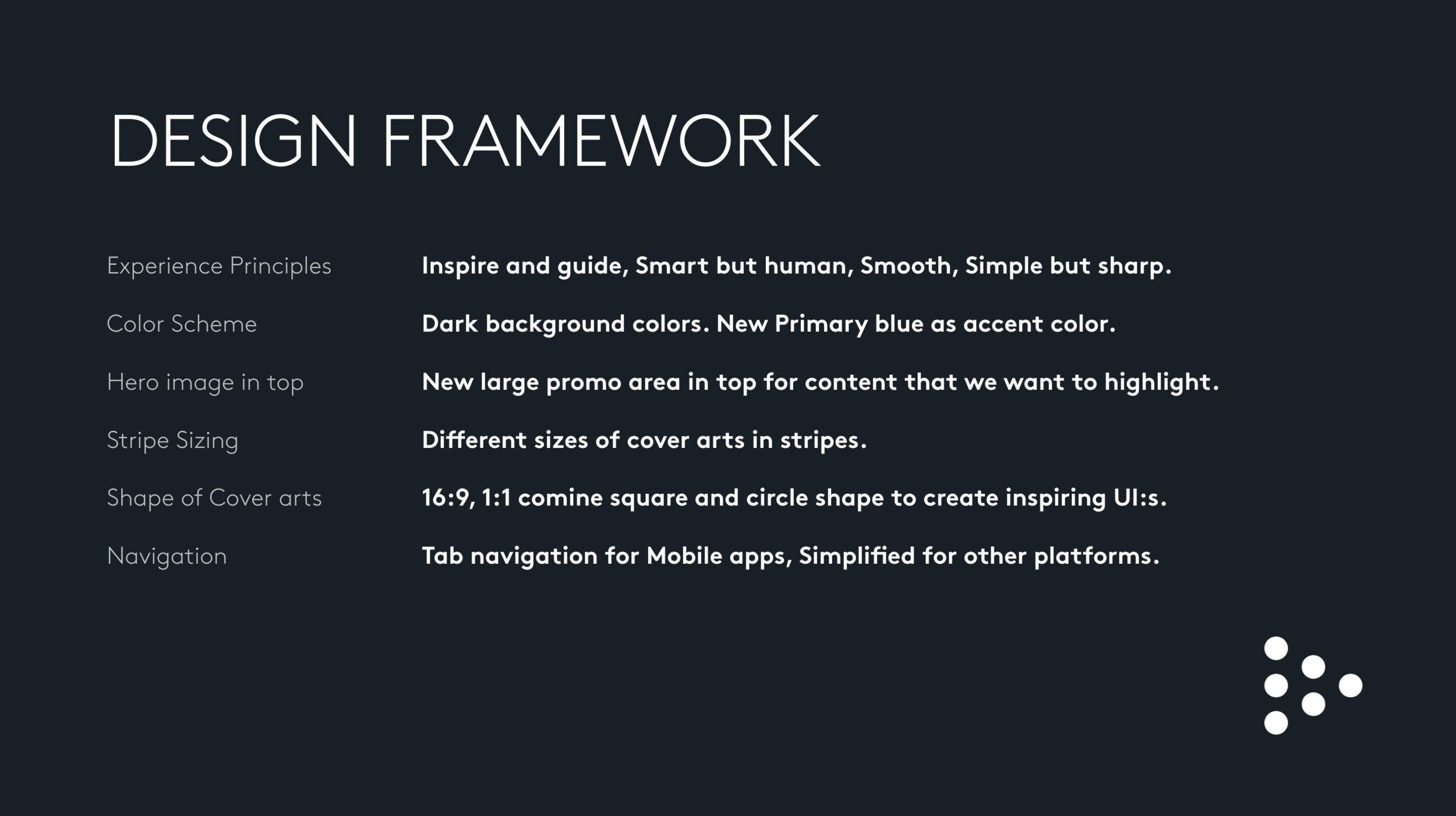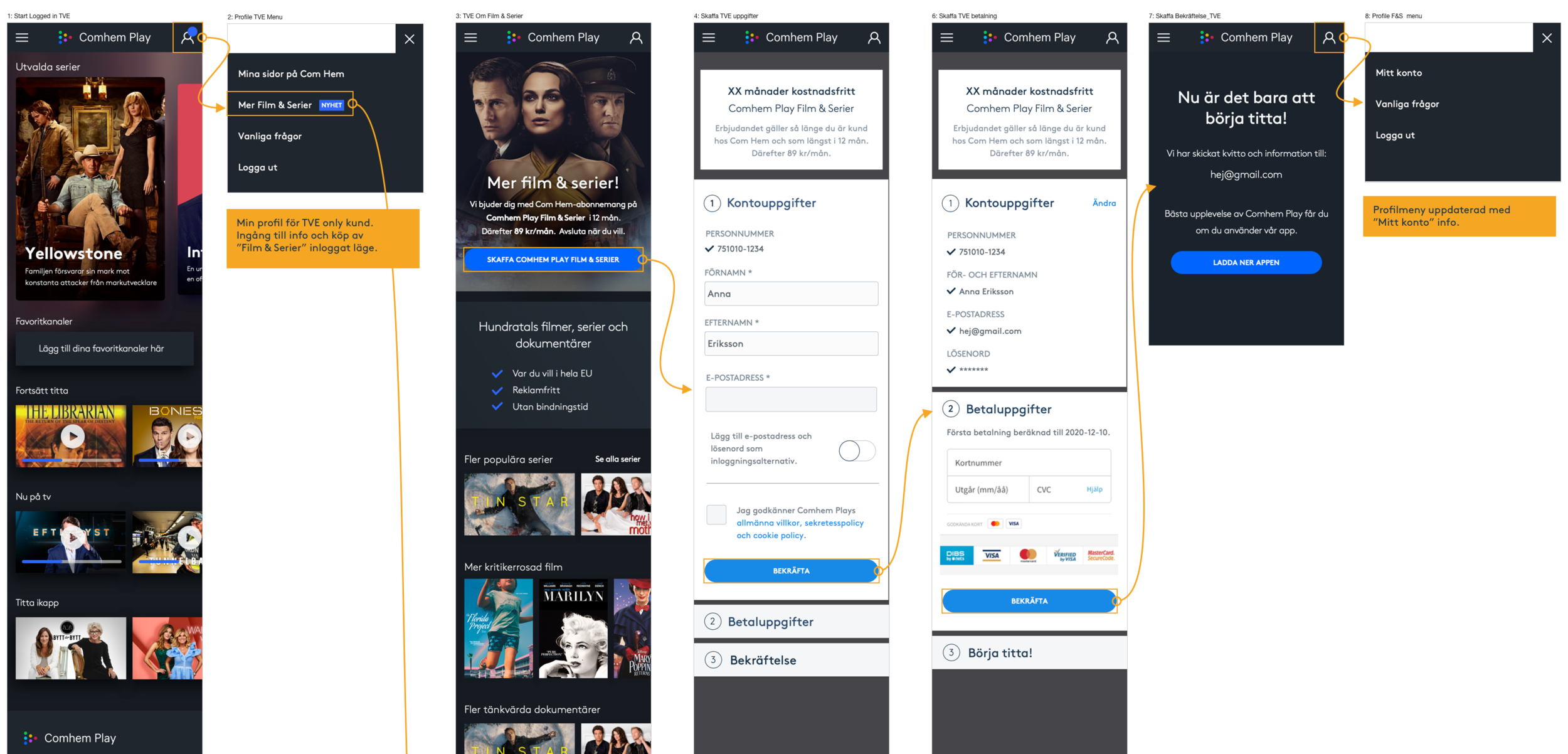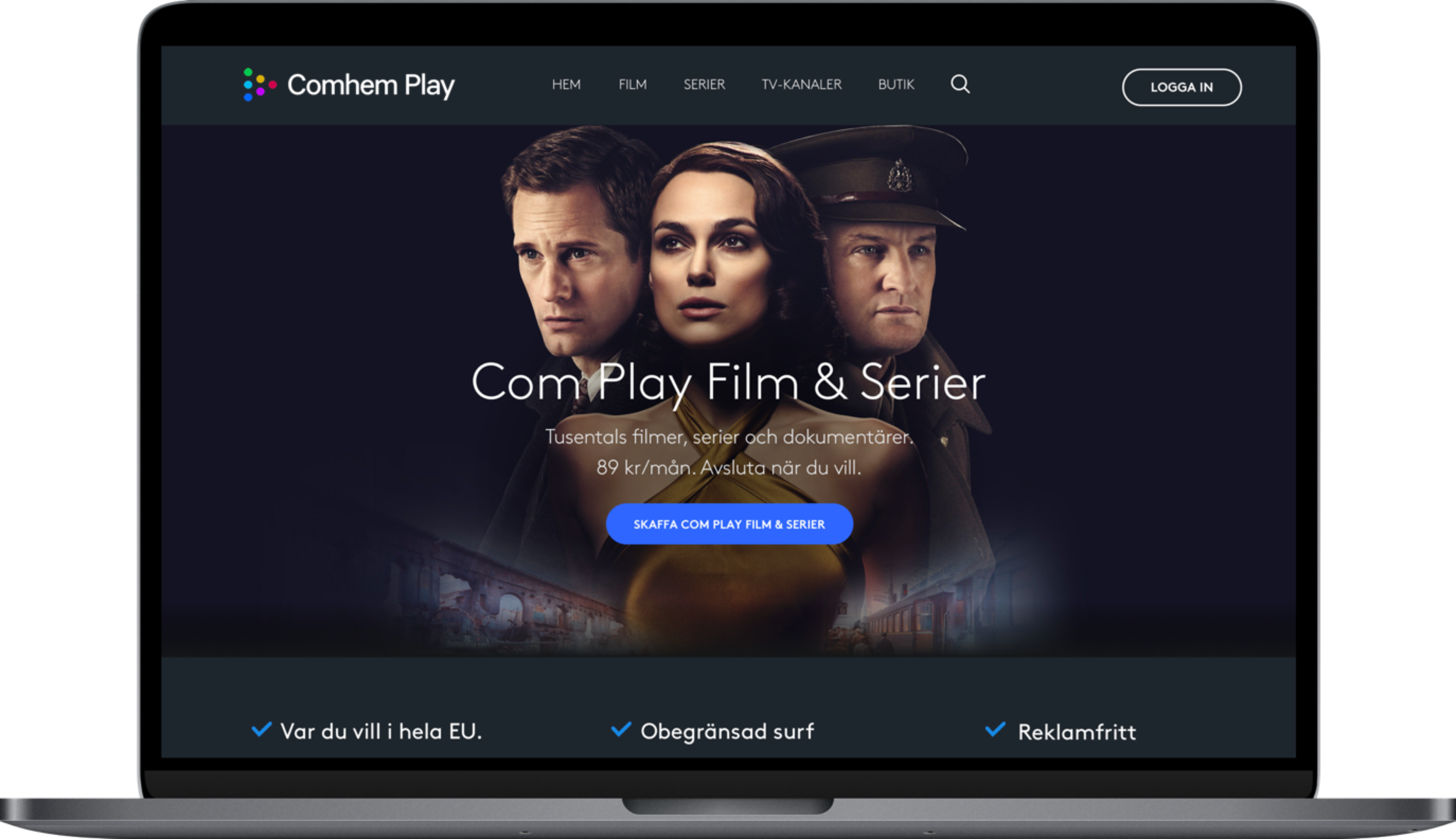
Comhem Play redesign
Redesigning Comhem Play
Brand and product transformation to compete in the streaming market.

Impact at a Glance
As Design Director, I led the redesign of Comhem Play—transforming it from a bundled TV add-on into a standalone streaming product.
In just 6 months, I:
Defined a new brand vision, logo and design language
Led a cross-functional team across 6 platforms
Introduced a new design system and scaled the team
Launched a redesigned purchase flow and Smart TV experience
Helped position Comhem Play as the fastest growing streaming service in Sweden by summer 2020
Background
Comhem Play originally served as a companion service for Com Hem’s TV subscribers, offering time-shifted access to linear TV and recordings across devices. Visually and structurally, it reflected the Com Hem brand: light color schemes, familiar typography, and a strong link to TV subscriptions.
But by 2019, the strategy shifted. Comhem Play needed to stand on its own as a streaming-first, subscription-based product—competing with global players at an accessible price point.

BEFORE: The old Com Hem Play experience was intentionally connected to the Com Hem brand.
My Role
I was brought in as Design Director, responsible for:
Defining the brand and design strategy
Creating directional concepts for logo, identity and product experience
Leading staffing and planning for the design team
Acting as a strategic partner to Marketing, TV Product and Tech
Mentoring and reviewing design work across platforms
The Challenge
The redesign effort was ambitious. In just six months, we needed to:
Create a new brand and identity
Redesign the logged-in experience across 6 platforms
Build a new web-based purchase flow
Launch a Samsung Smart TV app
Create a new design system
Continue improving the existing Comhem Play service—all at the same time

AFTER: The new Comhem Play experience with a more unique branding and product design.
Design Strategy
I defined a three-part design strategy to create alignment across teams and stakeholders:
Brand – What we stand for and how we’re perceived
Identity – How we express it visually
Product Design – How users experience it
We began with a creative kickoff involving Marketing, Product and Management to define our brand pillars: personality, tone of voice, benefits and positioning.

I defined a design strategy and lead activities within 3 areas: Brand, Identity and Product design to help the team with prio and framing.
Brand & Logo Direction
I planned and facilitated the kickoff workshop with key management stakeholders to set the cornerstones for the brand: personality, tonality, benefits, position etc. After that I took some time to design different concept directions and started to explore colors, shapes, logo symbol, typography and the usual suspects. Regular checkins with our Marketing, Product Director and design team made progress smooth.
A big strategic decision were about the name itself: should we keep it or rename it? Many debates were between Complay and Comhem Play. After some discussions we landed in keeping the name Comhem Play but upgrade the looks and make it stand out more as a brand, still with a hint of origin. That’s why we landed in using the circles from the Com Hem logo, but modernise the colors and make them shape a triangle to be interpreted as a Play symbol.

One of many monochrome explorations for the logo to help shaping the brand design direction

Early explorations of background colors in product design to help set cornerstones for colors in the brand.

Framework for the product design to help designers keep focus and explore within the constraints.
Building the Team
After securing buy-in on direction, I staffed and onboarded the design team:
2 product designers (Fredrik Suter and Julius Andersson) – responsible for the logged-in experience across all platforms
1 UX designer (Sara Frank) – focused on the logged-out web experience and purchase flow
1 visual designer (Annelise Müller) – working on logo, identity, and brand assets
My role evolved into coach, design reviewer and strategic unblocker, helping the team stay on track and focused.

The design team in action in workshops that helped us shape the new experience, and yes I was there as well, facilitating the work.
Product Design Process
We ran collaborative discovery workshops with product and tech to identify the most critical pain points in the existing product.
We then established a set of experience principles to guide all design decisions, such as:
“Smart but human”
“Inspire and guide”
“Intuitive and smooth”
Designers worked with flexibility within this framework—exploring new interactions, testing early concepts with users, and continuously iterating.

To discover the right solutions the team designed many ideas in cross functional design studio workshops and tested them on real users to understand what would be the best solution to deliver.
Discovery & Delivery Mindset
I encouraged the team to keep a dual-track mindset—exploring ideas and testing hypotheses while still delivering value in the current product.
We worked iteratively with:
Paper sketches
Wireframes and UI mockups
Motion prototypes
Weekly feedback loops with users
Web & Purchase Flow
The UX Designer defined a new logged out experience with a functional purchase flow. My role was to coach and mentor the designer, letting her lead the process rather than me. Together with the Product Manager she facilitated workshops with key Engineering stakeholders to understand limitations and challenges.
The main challenge was to design a simplified purchase flow, without confusing the current Com Hem Play customers – who should still be able to use their service as before, but with the possibility of adding a new and more content. This was the biggest challenge from a flow perspective and many different versions were user tested before final version was decided.

The User story map helped us understand the different user needs and actions needed internally when walking through the purchase flow for the new Comhem Play.

Clickable prototypes from screens like this were tested in mobile devices to get feedback from real users before taking decisions.

Concept design for Web Start page logged out experience in desktop resolution.
Design System & Platforms
While exploring concepts, we also started building a design system in parallel, using it to align the visual and functional language across:
Web
iOS
Android
Apple TV
Samsung Smart TV
Android TV
The Samsung Smart TV app became a flagship showcase of how the design evolved from early direction to final delivery.

The new Samsung Smart Tv experience is a good example on how the design evolved from the initial framework.

Results & Learnings
The new purchase flow launched in beta in Dec 2019, with full rollout in Feb 2020
User feedback directly influenced iterations post-launch
The redesign helped position Comhem Play as the fastest growing streaming service in Sweden by mid-2020
Key learnings:
Continuous user testing helped us make faster, better decisions
We initially stripped too much information from the start page—user feedback helped us recalibrate
Given more time, I would have explored more diverse directions for the branding expression—but the outcome was still something I’m proud of
